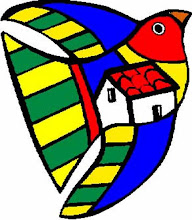This press release went out at noon today. Episcopal News Service will be running an article later on.
+
Bishop of the Anglican Church of El Salvador victim of an assassination attempt
San Salvador, 18 March 2010
The Episcopal Church of El Salvador denounces before the general public and the international community the murder attempt that Bishop Barahona and two of his closest collaborators suffered.
This past Wednesday night (17th), Bishop Barahona, along two of his closest working partners, was victim of the violence that has held this country imprisoned. An unknown man, without saying anything, shot at them . The bullets hit the bishop’s driver, Francis Francis Martínez, who is now hospitalized. Meanwhile, the bishop, thanks be to God, was unharmed.
What is odd about these events is that the police was just a couple of meters away. As the Episcopal Church, we are dismayed by this inexplicable fact. The bishop is a pastor whose principle function is to accompany spiritually the faithful who seek his advice and solace.
We lament profoundly this fact, as do many Salvadorans, who are victims of violence and impunity. We ask everyone’s prayers that hope in a different El Salvador is not lost and that this event is not a sign of persecution of the church.
The Most Rev’d Martín Barahona, 67 years old, has been the Bishop of the Anglican Church of El Salvador since 1992 and he is the Primate of the Anglican Communion in Central America (IARCA). This church is one of the historical churches, characterized by its prophetic accompaniment of the national reality.
We invite you to a press conference this afternoon at 3.00 PM at San Juan Evangelista, on 63rd Avenue Sur, in front of the Telefónica y Telecom towers.
DEPARTAMENTO DE COMUNICACIONES DE LA IGLESIA ANGLICANA DE EL SALVADOR
+
Obispo de la Iglesia Anglicana de El Salvador victima de atentado
San Salvador, 18 de marzo de 2010. La Iglesia Episcopal de El Salvador denuncia ante la población en general y comunidad internacional, el atentado a muerte que ha sufrido el Obispo Martín Barahona y dos de sus más cercanos colaboradores.
La noche de este miércoles, el Obispo Martín Barahona junto a dos de sus más cercanos colaboradores fueron víctima de la violencia que tiene aprisionado este país; un hombre desconocido, sin mediar palabras les disparó. Los impactos alcanzaron al motorista del religioso, Francis Martínez, quien se encuentra hospitalizado. Mientras que el Obispo, gracias a Dios resultó ileso.
Lo curioso de los sucesos es que, a metros del atentado se encontraba la policía. Como Iglesia Episcopal nos encontramos consternados y sin explicación para este hecho. El Obispo es un pastor, cuya función principal es el de acompañar espiritualmente a su feligresía y a quienes buscan su consejo y consuelo.
Lamentamos profundamente este hecho, como el de muchos y muchas salvadoreñas, que a diario son víctimas de la violencia y de la impunidad. Pedimos las oraciones de todos y todas para que no se pierda la esperanza de un El Salvador diferente y que no sea este suceso una señal de persecución a la Iglesia.
El reverendísimo Martín Barahona, de 67 años de edad, es el Obispo de la Iglesia Anglicana de El Salvador desde 1992, y es el Primado de la Comunión Anglicana en Centro América (IARCA). Esta Iglesia al igual que las llamadas Iglesias Históricas se ha caracterizado por acompañar, desde una visión profética la realidad nacional.
Le invitamos a conferencia de prensa esta tarde a las 3.00.P.M. en San la Parroquia San Juan Evangelista, sobre la 63 ave. Sur. Frente a las Torres Telefónica y Telecom.
+
From ENS
EL SALVADOR: IARCA primate, two others survive gunfire
By ENS staff , March 18, 2010
[Episcopal News Service] The Anglican Episcopal Church of El Salvador March 18 publicly denounced the attempted murder of Bishop Martín Barahona and two others, according to a news release issued by the church.
The incident happened in Santa Tecla, El Salvador, on March 17 when an unknown man approached and fired upon Barahona, a church musician and Francis Martínez, the bishop's driver, according to news reports. Barahona was unharmed, but Martinez was hit in the stomach and his arm was broken by one of the gunshots. He is in "grave but stable condition," said the Rev. Lee Alison Crawford, rector of Trinity Church in Rutland, Vermont and a member of the Episcopal Church's Executive Council, in a telephone interview with ENS.
"At this point we don't know if there was a particular motivation or whether this was random, which is symptomatic of the pervasive violence that affects all sectors of daily life in El Salvador," she said.
Crawford, who is the canon missioner of the Anglican Episcopal Church of El Salvador, said she had been in touch with church members in El Salvador after receiving word of the shooting.
The ongoing violence in the country, she said, comes from a "complex combination" of factors, including gang and other criminal activity, a "profusion of arms floating around the country" since the end of the civil war in the early 1990s and the country's economic stresses.
Barahona, 67, became bishop of the Anglican Episcopal Church of El Salvador in 1992, and is the primate of the Iglesia Anglicana de la Region Central de America (IARCA). Barahona is scheduled to participate in a service commemorating the 30th anniversary of the assassination of Salvadoran Roman Catholic Archbishop Óscar Romero to be held March 27th at Grace Cathedral in San Francisco.
The province, formed in 1998, consists of the dioceses of Costa Rica, El Salvador, Guatemala, Nicaragua and Panama. The Episcopal Church has been in a "covenant partnership" with IARCA since its creation. More information about the history of the relationship between the province and the Episcopal Church and the covenant partnership is here.
The Salvadoran church was scheduled to hold a news conference about the shooting on the evening of March 18.























































